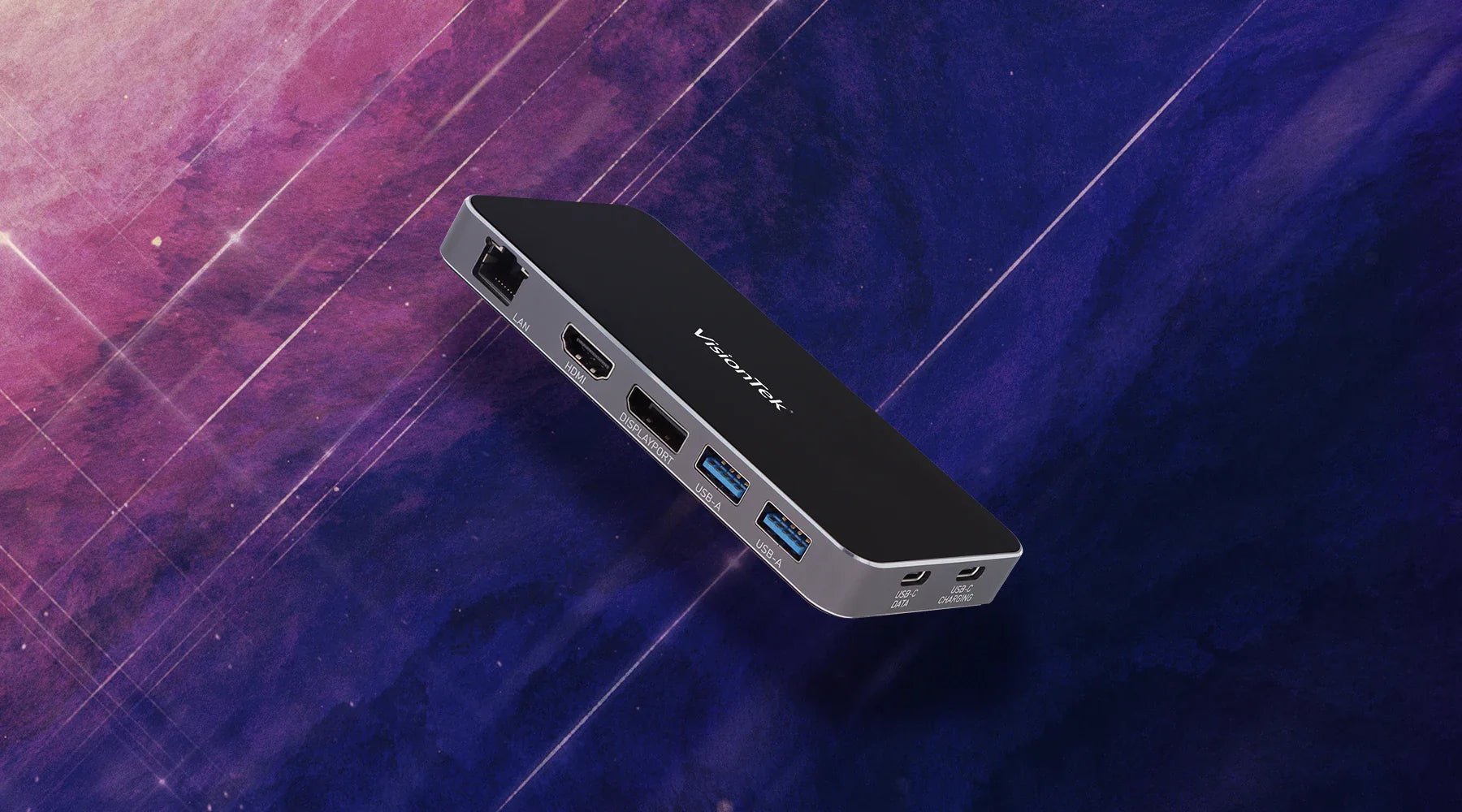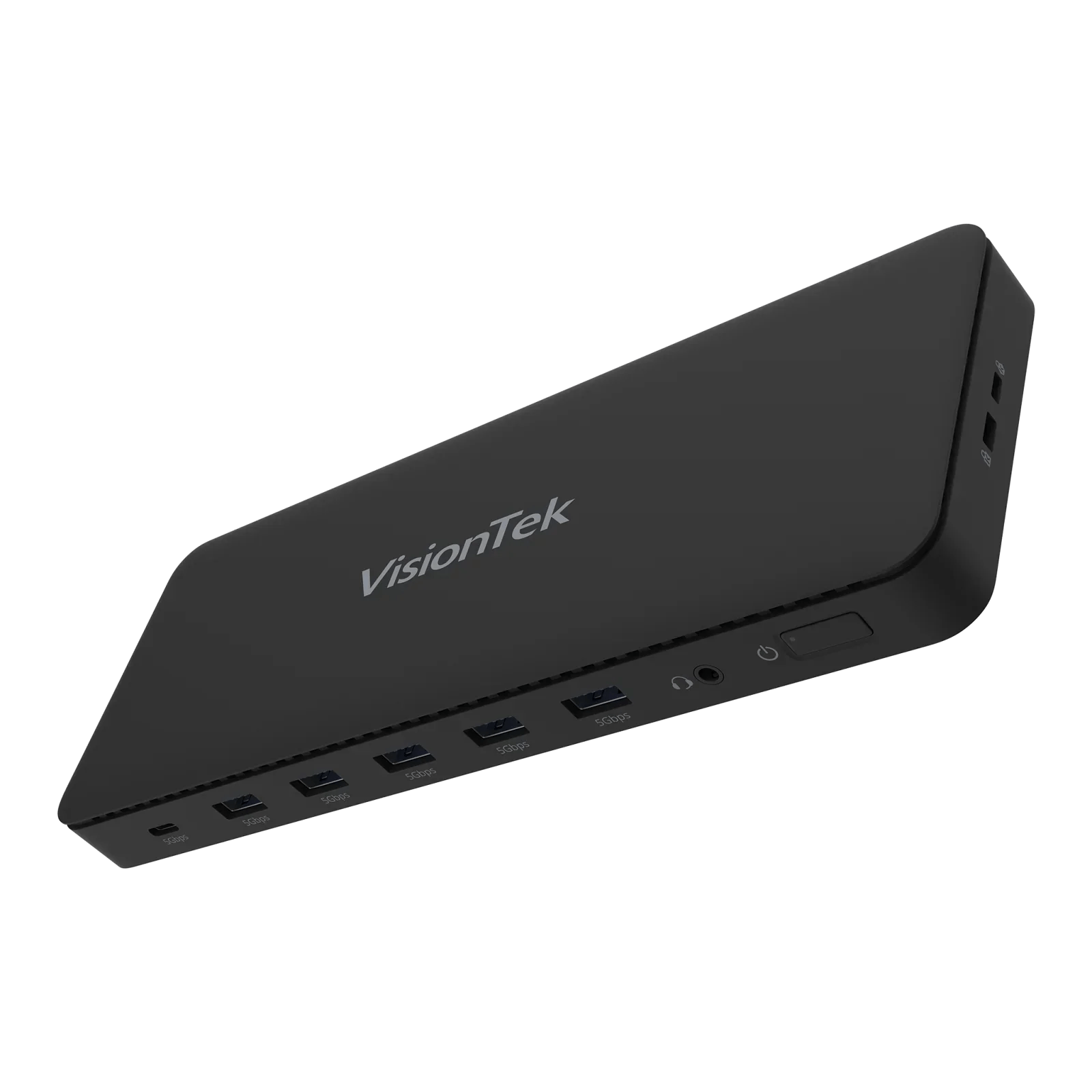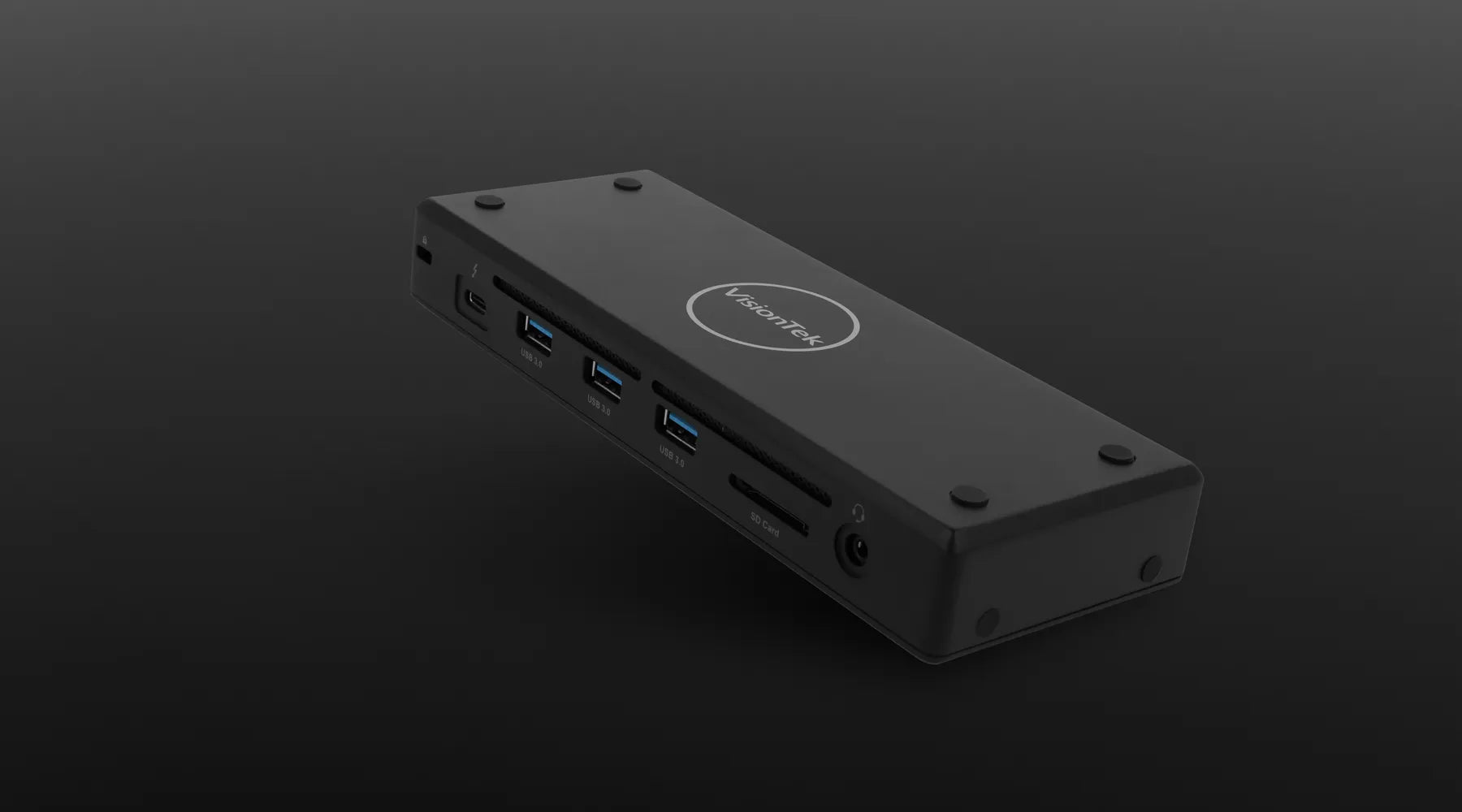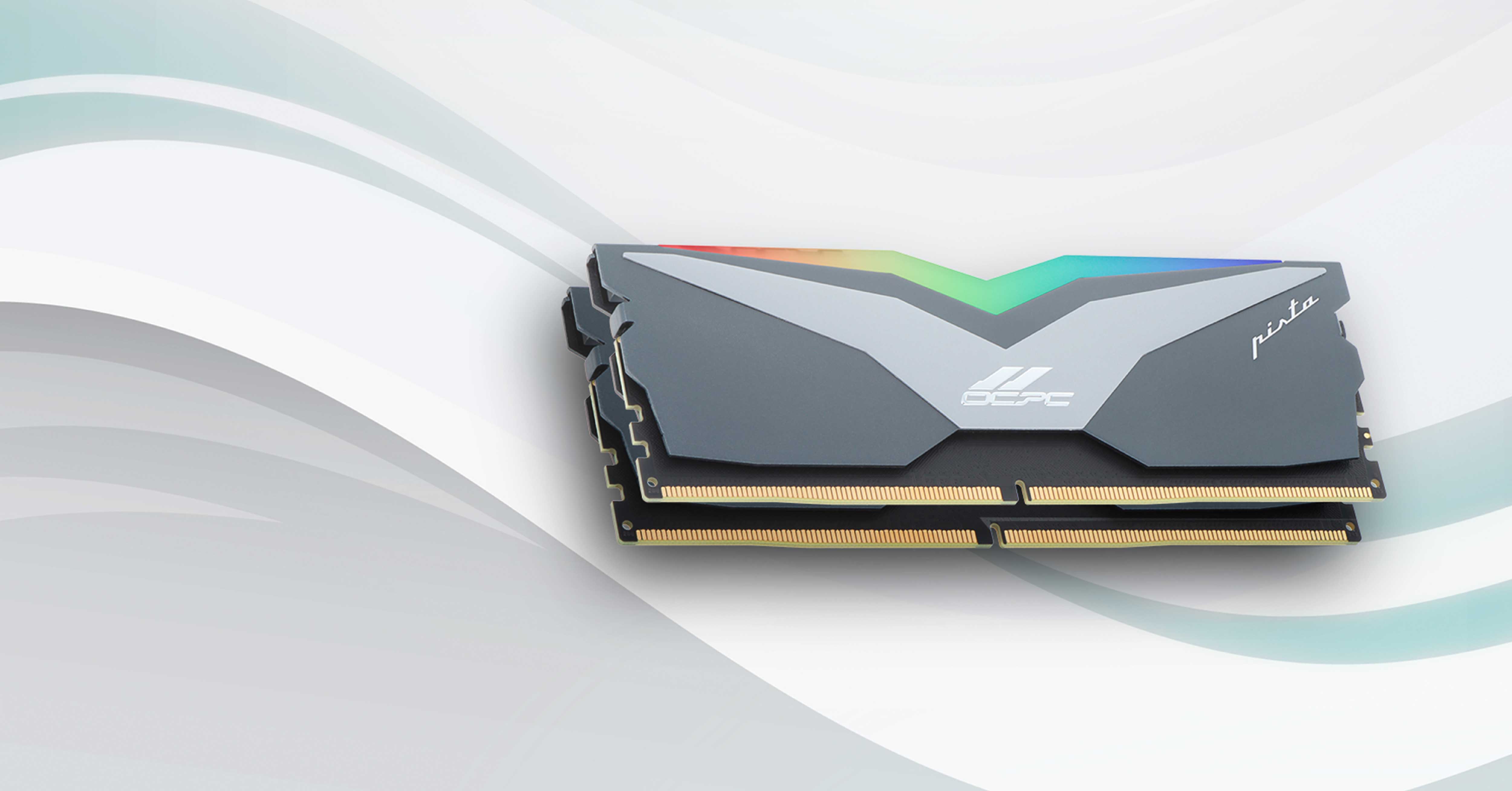Each VisionTek docking station comes designed with a carefully selected collection of ports for various needs and situations. Your desired configuration of ports might depend on necessary accessory connections, portability, or a display setup.
USB-A
Quite possibly one of the most recognizable ports on computers today, USB 3.0 or USB Type-A has been the standard for data transfer, keyboard and mouse, and various tech accessories for years. Today, many laptops and PCs docks are moving on toward USB-C for faster data transfer and sleeker profile. That said, many tools and peripherals used in the office or while remote still require access to these ports. That’s why VisionTek docks maintain an adherence to USB-A while still offering more modern port connections.
USB-A Port - Female
USB-A Cable - Male
A successor to the USB-A port, the USB-C port is ubiquitous now with many widespread top-tier tech. Fast replacing USB 3.0 connections, USB-C is slimmer and matches the thin aesthetic of newer laptops. Unlike the 4-pin system of a USB Type-A connection, USB-C uses 24-pins, meaning it can handle faster transfer speeds.
Unlike USB-A, USB-C supports various Power Delivery protocols that can charge tablets, phones, laptops and other devices that traditionally had to have a separate power supply.
Some systems support DisplayPort over USB-C to feed a display signal over the USB-C connection. This can be adapted to a standard HDMI or DisplayPort signal, or it can be used to connect directly to a USB-C monitor. In a future post, we will dig into all the USB-C variations and their corresponding markings.
USB-C Port - Female
USB-C Cable - Male
Thunderbolt™ 3 / Thunderbolt™ 4
Developed by Intel in collaboration with Apple, Thunderbolt 3 looks the same as a regular USB-C port, using the USB Type C connector. However, not all host connections, cables and devices with a USB-C connector support Thunderbolt 3. A USB-C device is compatible with a Thunderbolt 3 host connection, but a Thunderbolt 3 device is not compatible with a standard USB-C host connection.
To determine if your component is a Thunderbolt 3 device, look for the lightning symbol Thunderbolt™ 3 marking – strictly USB-C devices do not include this symbol.
Thunderbolt™ 3 & Thunderbolt™ 4 Port
Thunderbolt™ 3 Cable Male
Thunderbolt™ 3 connects computers and electronic devices with excellent bandwidth and resolution capability with faster transfer speeds up to 40 Gbps, which is 4x faster than a standard USB-C 3.1 Gen 2.
Thunderbolt™ 3 uses the USB-C connector, but not all host connections, cables and devices with a USB-C connector support Thunderbolt™ 3. This means that a USB-C device is compatible with a Thunderbolt™ 3 host connection, but a Thunderbolt 3 device is not usually compatible with a USB-C host connection. However, some docking stations, like VisionTek's VT4800 support both protocols.
To ensure your device is compatible, it is important to know whether you have a USB-C or a Thunderbolt 3 host, cable or device. To determine if your component is a Thunderbolt 3 device, look for the Thunderbolt 3 marking – strictly USB-C devices do not include this symbol.
VisionTek’s VT5000 series, including the upcoming VT5400 is catered specifically to Thunderbolt™ systems.
Thunderbolt™ 4
Building on the success of Thunderbolt™ 3, Intel developed Thunderbolt 4 with a few under-the-surface improvements, primarily standardizing the ability to send a video signal to two 4k displays, or to a singular 8k display. This is a significant upgrade, as some Thunderbolt 3 systems only supported a single 4k display. Added bandwidth in the Thunderbolt 4 connection will help with high resolution video and transfer speeds.
Daisy-chaining also offers the ability to connect up to 6 Thunderbolt compatible devices without needing a direct connection to your laptop or PC, ultimately offering more flexibility in your office workspace.
An HDMI or High Definition Media Interface connection is a common port providing transfer of audio and visual signals from a laptop, PC, or other device to a monitor, game console, or projector. An HDMI port is regularly seen in docking stations for us wide use and HD resolution capability.
HDMI Port - Female
HDMI Cable - Male
Similar to the HDMI port, the DisplayPort (DP) and Mini DisplayPort (mDP) are found in many laptop layouts and are used to transmit video and audio signals to external monitors. Full DisplayPort connections are more likely found in docks and larger laptops while Mini DisplayPort are regularly seen devices like MacBook Pros and tablets.
DisplayPort - Female
DisplayPort Cable - Male
Unsurprisingly, most at-home users and working professionals lean on the dependability of a reliable and fast internet connection. Nearly all of VisionTek’s docking stations are outfitted with a Gigabit Ethernet port that allows for rapid and trustworthy internet speeds via a single quick connection.
Ethernet - Female
Ethernet Cable - Male
A Port for Every Need
At the end of the day, PCs and laptops should provide the ability for their users to connect devices and attain the most optimal arrangement possible. Unfortunately, this isn’t always the case. For that reason, VisionTek has developed a collection of docking stations that provide connectivity for all of the ports mentioned above, and more.





Share:
VisionTek’s New VT7000 Unlocks Triple 4K Displays with a Single USB-C Connection
It's Time to Invest in a Reliable High-Quality HD Webcam